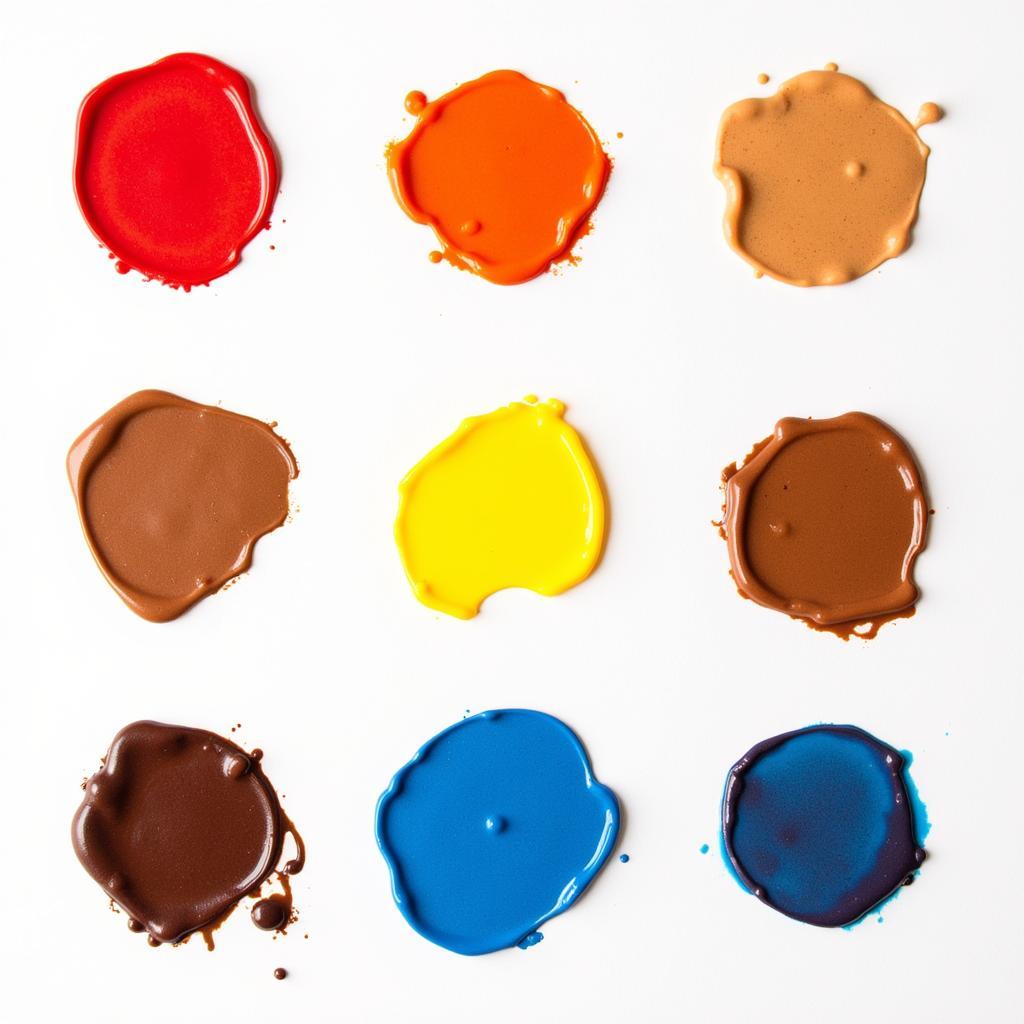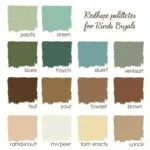Creating the perfect shade of brown with food coloring might seem like a daunting task, but with a little knowledge and the right techniques, you can achieve beautiful, rich browns for all your culinary creations. Whether you’re frosting a cake, dyeing Easter eggs, or adding a touch of earthiness to your homemade playdough, mastering this skill will open up a world of creative possibilities.
Understanding the Basics of Color Mixing
Before diving into the specifics of making brown, it’s essential to grasp the fundamentals of color theory. Brown isn’t a primary color like red, yellow, or blue. Instead, it’s a composite color, meaning it’s created by combining multiple hues. The most common way to make brown with food coloring involves mixing these three primary colors in specific proportions. If you’re curious about other color combinations, check out how to make bright orange food coloring.
Mixing Primary Colors to Achieve Brown
The key to achieving the desired shade of brown lies in understanding the relationship between red, yellow, and blue. Start with red and blue to create purple. Then, gradually add yellow to the purple mixture. The more yellow you add, the lighter and more golden the brown will become. Conversely, adding more red will create a warmer, redder brown, while adding more blue will result in a cooler, more muted brown.
- Start with equal parts red and blue.
- Gradually add yellow, a little at a time, mixing thoroughly after each addition.
- Adjust the red and blue as needed to fine-tune the shade.
Fine-tuning Your Brown Hues
Once you’ve mastered the basic mixing technique, you can start experimenting with different ratios to create a wide range of brown shades, from light tan to deep chocolate. Remember, small adjustments can make a big difference, so it’s best to add the colors gradually and observe the changes carefully. For an alternative to using food coloring, you can explore how to make icing without food coloring.
Creating Specific Shades of Brown
- Light Brown/Tan: Use a smaller amount of blue and red, with a larger proportion of yellow.
- Medium Brown: Use roughly equal parts of all three primary colors.
- Dark Brown/Chocolate: Use more blue and red, and less yellow. You can further deepen the color by adding a tiny drop of black food coloring, if available. You can even consider how to make the color cream for different projects.
 Different Shades of Brown Food Coloring
Different Shades of Brown Food Coloring
Tips and Tricks for Successful Brown Food Coloring
Getting consistent results with food coloring can sometimes be tricky. Here are a few tips to help you achieve the perfect brown every time:
- Use gel or paste food coloring: These concentrated formulas provide more vibrant colors and are less likely to alter the consistency of your mixture compared to liquid food coloring.
- Mix in a separate container: This allows you to control the color development more precisely before adding it to your main mixture.
- Test on a small sample: Before coloring the entire batch, test your brown on a small portion to ensure you’re happy with the shade.
“Using high-quality food coloring makes a world of difference. The colors are more vibrant and easier to control.” – Amelia Hues, Color Specialist.
Troubleshooting Common Issues
Sometimes, despite your best efforts, the brown may not turn out exactly as expected. Here are a few common issues and how to fix them:
- Brown too red: Add a touch more blue and yellow.
- Brown too green: Add more red and a little bit of yellow.
- Brown too light: Add more red and blue.
“Practice makes perfect! Don’t be discouraged if your first attempt isn’t perfect. Experiment with different ratios to discover the nuances of color mixing.” – Benjamin Dye, Food Coloring Expert.
Conclusion
Making brown with food coloring is a simple yet versatile technique that can enhance your culinary creations. By understanding the principles of color mixing and following these tips, you can achieve a wide range of beautiful brown hues. Now that you’ve mastered brown, perhaps you’re curious about does coloring hair make it thicker? So, grab your food coloring and start experimenting!
FAQs
-
Can I use natural food coloring to make brown? Yes, you can use ingredients like cocoa powder, coffee, or caramel to create natural brown shades.
-
What if I don’t have all three primary colors? If you’re missing a primary color, you can try combining other colors, but achieving a true brown might be difficult.
-
How much food coloring should I use? Start with a small amount and gradually add more until you reach the desired shade.
-
Can I mix food coloring brands? Yes, you can mix different brands, but the results may vary depending on the concentration and quality of the colors.
-
How do I make a lighter shade of brown? Add more yellow to the mixture.
-
How do I make a darker shade of brown? Add more blue and red or a touch of black food coloring if you have it.
-
What should I do if my brown looks too green? Add more red and a small amount of yellow.
If you’re interested in nail art, you might find may color nails helpful.
You might also find it interesting to learn more about how to make the color cream for your icing and frosting projects.
Need help with a specific color challenge? Contact us! Phone: 0373298888, Email: [email protected]. Visit us at 86 Cầu Giấy, Hà Nội. We’re here for you 24/7.
